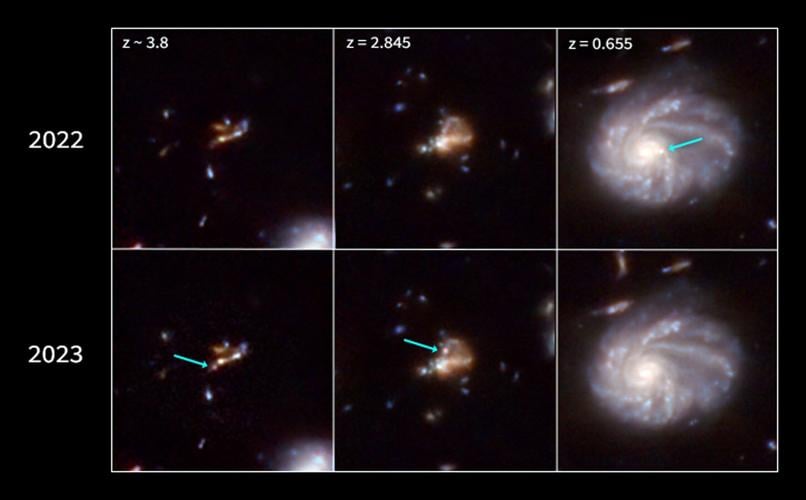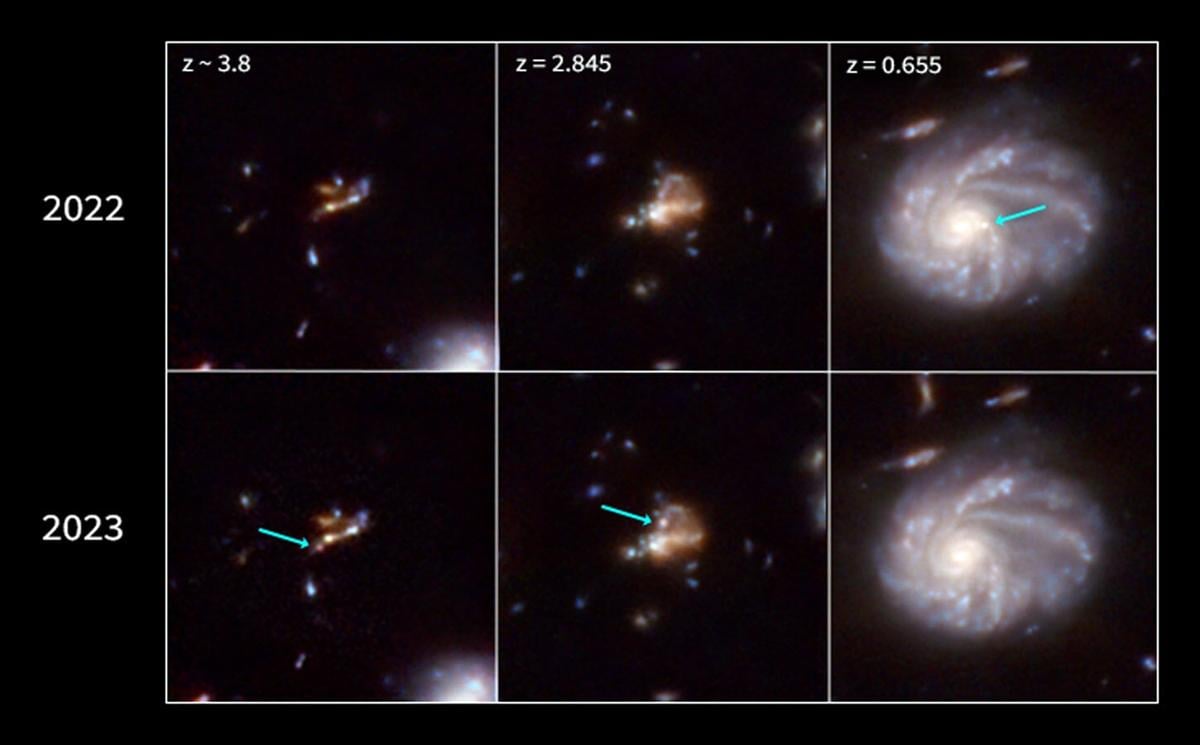Using imaging data from NASA’s James Webb Space Telescope to survey the distant cosmos, University of Arizona graduate student Christa DeCoursey and her team in the Department of Astronomy and Steward Observatory are expanding scientific understanding of supernovae.
Over the last year, DeCoursey and her team scoured images, obtained as part of the JWST Advanced Deep Extragalactic Survey, or JADES, program, which revealed 80 bright supernovae, many of them among the most distant and oldest ever found.
“We got those really deep images with the primary goal of finding the earliest galaxies in the universe,” DeCoursey said. “Because the observations happened to be separated by a year, it gave us this unique opportunity to look for the most distant supernovae discovered thus far.”
The images compared by the researchers featured the same section of sky, roughly the size of a grain of rice held up at arm’s length, taken a year apart.
“Comparing the two images against each other, most of the galaxies look exactly the same, because the galaxies don’t really change on your long time scales, but if a supernova occurs, which is an explosion of a massive star, then something really bright will pop up in one image and fade in the next image,” DeCoursey said. “So by looking for these subtle differences between the two images, we were able to identify supernova explosions.”
DeCoursey said JWST was uniquely equipped for this kind of exploration, with a mirror about 10 times the size of the mirror on the Hubble Space Telescope, and about 100 times more sensitive. JWST also allows researchers to see these very distant, deep space objects, because it is able to observe infrared light.
When light emitted from supernovae travels through space, the universe stretches the wavelengths of the light in a process called cosmological redshift, DeCoursey said.
“So say that the supernova emits UV light, that UV light is stretched to visible light and then stretched to infrared light,” DeCoursey said.
That infrared light is then captured on images by JWST.
“That’s why we’ve been able to find so many more novae,” DeCoursey said. “Hubble just would not have been able to detect these.”
To measure the distance of the deep space objects, DeCoursey’s team used known landmarks as references.
“If we see a supernova that is occurring right next to or within one galaxy, and we know the distance to that galaxy from previous studies, then we attribute that distance to the supernova,” she said.
The team wasn’t just measuring physical distance however, but time, calculating the distances in light years.
“So something that’s one light year away means that the light we’re seeing from it was emitted from that object one year ago,” DeCoursey said. “The farther away something is from us, the older that light is because it needed more time to travel to us. And so by looking at these very distant supernovae, we’re seeing the universe as it existed 12 billion years ago.”
According to DeCoursey, the most distant supernovae identified by the team exploded when the universe was just over 1 billion years old.
“The universe is now 13.8 billion years old, so it really was exploding when the universe was in its pre-teens phase,” DeCoursey said.
There were other significant findings too, which DeCoursey and her teammate Justin Pierel shared at the American Astronomical Society in Madison, Wisconsin this month.
“We found the most distant type 1a supernova, which has some implications on cosmology and just our theory of how the universe started and has evolved,” DeCoursey said.
DeCoursey’s team also discovered a relatively uncommon type of supernovae in their images, which DeCoursey said they didn’t expect to find in such a small area. The presence of this rare supernovae reframes much of what the researchers thought they knew previously.
“The rates of particular types of supernovae might be different in the distant universe than they are in the nearby universe, which has more implications for the environments of galaxies, how they differed many billions of years ago, as opposed to the nearby galaxies that are existing now.”
Of course, all of DeCoursey’s spectacular findings leave more questions to be explored.
“There are future things that we have planned to do that can teach us more about the early universe,” DeCoursey said. “One thing that JWST has found is that there’s a lot of very bright, luminous galaxies in the very early universe, which we didn’t necessarily expect based on our previous theories of how galaxies form, so we’re wondering why we found these very bright galaxies.”







